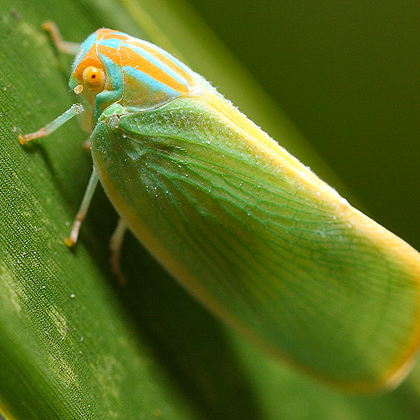-

Ormenaria rufifascia adults are rather large for planthoppers, about 11 mm in length. It is not considered a serious pest, although large populations can cause aesthetic damage due to the large amount of honeydew that supports extensive coatings of sooty mold on host plants.
adult -
-mhaseeb.jpg)
The vast majority of leaf beetles that are considered pests of palms belong to the Hispinae subfamily of Chrysomelidae and are leaf miners. Chrysomelids are strongly associated with plants, and are therefore primarily terrestrial. Nearly all members of the family are phytophagous, and many are considered pests.
Coraliomelia brunnea, dorsal view -

Lepidoptera larvae vary widely in appearance within the order, though they all share the same caterpillar-like appearance. Lepidoptera is the most important order of defoliating insects on palms. All but a small minority are phytophagous in the larval stage.
saddleback caterpillar, Acharia stimulea, larva
Screening Aid to Palm Pests
This tool is aimed primarily at the novice entomologist. A number of arthropod pests attack palms in sufficient force to be a threat to the plant, and some vector diseases that are potentially lethal to palms. Screening Aid to Palm Pests is therefore designed to help users determine which type of arthropod palm pest they have found and features illustrated fact sheets with descriptions of each pest as well as two interactive keys: for arthropod adults and for larvae. Since this tool is intended as a screening aid for less experienced users in the field, most features in the key can be used with the naked eye or a hand lens.


